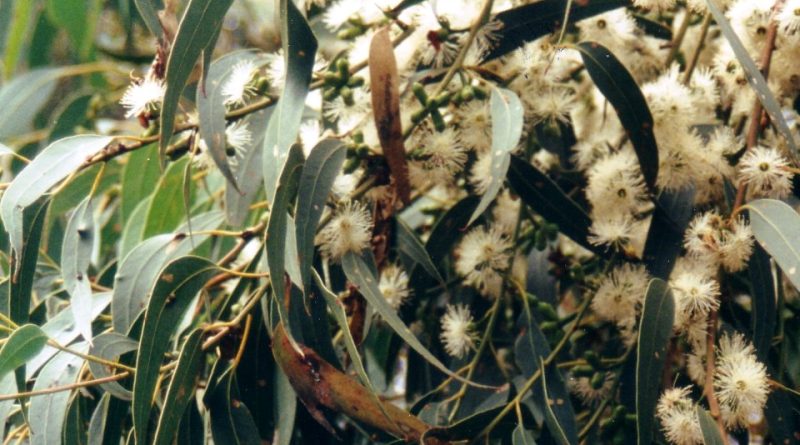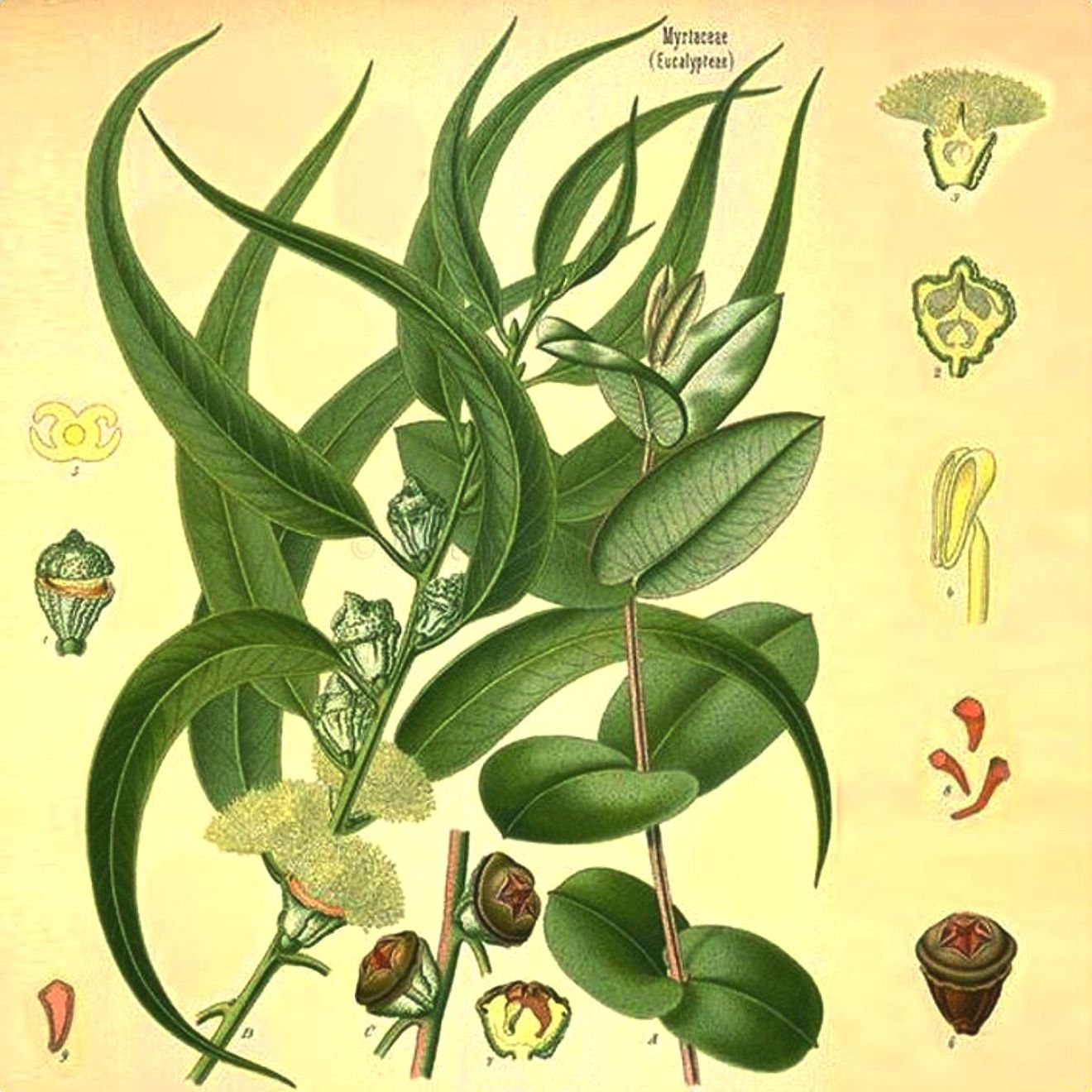Eucalyptus dives
Eucalyptus dives
The eucalyptus known as broad-leaved peppermint or blue peppermint (Eucalyptus dives Schauer) is an arboreal species belonging to the Myrtaceae family.
Systematics –
From a systematic point of view it belongs to:
Eukaryota domain,
Kingdom Plantae,
Subkingdom Tracheobionta,
Spermatophyta superdivision,
Magnoliophyta division,
Class Magnoliopsida,
Order Myrtales,
Myrtaceae family,
Subfamily Myrtoideae,
Tribe Eucalypteae,
Genus Eucalyptus
Species E. dives.
The term is synonymous:
– Eucalyptus amygdalina var. latifolia H.Deane & Maiden
Etymology –
The term Eucalyptus comes from the Greek ἐῧ éu true, well, perfectly and κᾰλυπτός kalýptos to cover, to hide: for the lobes of the glass and the united petals form a hood that completely encloses the closed buds.
The specific epithet dives means rich, abundant, referring to the rich oil content of the leaves.
Geographic Distribution and Habitat –
Eucalyptus dives is a tree endemic to southeastern Australia where it is found in New South Wales, south of Niangala and as far north as the town of Armidale, and southeastern Victoria.
Its habitat is usually that of poor, dry, shallow and stony soils, in open forests and woodlands in places of the higher altitude range.
Description –
Eucalyptus dives is a tree that grows up to a height of 20 m and even more.
The bark of the trunk and larger branches is rough, finely fibrous and greyish and smooth gray on the thinner branches.
Young plants and coppice regrowth have leaves arranged in opposite pairs, ovoid to heart-shaped or curved in shape, 60–140 mm long, 20–70 mm broad, and sessile. The adult leaves are alternately arranged, lanceolate to curved, the same slightly glossy or dull green color on both sides, 70–150 mm long and 14–42 mm broad, on a 5–33 mm long petiole.
Flower buds are usually arranged in clusters of eleven or more, present in the leaf axils on an unbranched peduncle 3–13 mm long; single buds are located on a 2–7 mm long pedicel. Mature buds are oval to claviform, 3–6 mm long and 2–4 mm wide, with a conical to rounded operculum.
Flowering occurs from September to January and the flowers are white.
The fruit is a woody, cup-shaped, hemispherical or conical capsule, 3–7 mm long and 4–8 mm broad, sessile or on a pedicel up to 5 mm long, long with valves near rim level.
Cultivation –
Eucalyptus dives is a plant from which essential oil is extracted and which grows naturally in humid and temperate-warm climates, generally in areas with annual minimum temperatures from 5 to 14 °C, annual maximum temperatures from 17 to 23 °C, annual rainfall from 600 to 1400 mm and a dry season of 5 months or less.
This plant grows best in well-draining loamy, loamy, sandy, sandy soils that are moderately acidic to slightly alkaline in nature, generally with a pH between 5.0 and 7.5, and in sites with full or partial sun exposure. It has poor tolerance to waterlogged or poorly drained soils.
New plants usually come from seed, which benefits from being, when reproduced, stratified and seeded in a non-sterile potting mix to increase survival rates and improve germination.
Customs and Traditions –
Eucalyptus dives is a plant that is characterized by the production of an essential oil, obtained by steam distillation, it comes from the leaves and twigs.
It has a strong herbaceous, woody and minty scent that is stimulating and uplifting. It is an essential oil with incredible therapeutic properties. It is used against colds and for states of congestion.
The refreshing properties of E. dives essential oil can help heal tired feet in a relaxing foot bath after a long day on your feet.
Use with this eucalyptus was first formally described in 1843 by Johannes Conrad Schauer and the description was published in Walpers’ book Repertorium Botanices Systematicae (Volume 2).
From this eucalyptus essential oil can be obtained up to 12.75% by weight of partially dried leaves.
Some forms of E. dives mainly contain the essential oils phellandrene and piperitone, some also contain eucalyptol and the rest eucalyptol, terpineol, geraniol and citral.
In the early post-war years there was a shortage of menthol and several manufacturers were able to produce this oil from piperitone, but gradually this method was replaced by the production of Mentha arvensis oil.
The cineole-rich form is still harvested in New South Wales, while the seeds imported into Africa are mainly of the piperitone/phellandrene form.
Depending on the variety, the fresh leaves by steam distillation yield about 3 to 4% eucalyptus oil of three types. The variety known as “C” produces eucalyptus oil with a high content of cineole (also known as eucalyptol), which is the most valuable of the eucalyptus oils due to its medicinal and antiseptic qualities. It is nearly identical, in composition, to the oil of Eucalyptus radiata, a closely related eucalyptus species that overlaps its native distribution.
Cineole-type eucalyptus oil is a proven expectorant, antiseptic and antibacterial, especially against strep. It is used in cough drops and syrups, vaporizer fluids, ointments, gargles, and oral care products such as toothpastes and mouthwashes. It is also commonly used in dentistry, particularly in solvents and sealants for tooth fillings after root canal surgery.
These oils are also good stain removers, having been shown to be effective in removing grease, glue and dried-on stains from both skin and clothing. Eucalyptus oils, more generally, are used in products for cleaning, mold removal, disinfection, perfumery, pharmaceutical, personal care and insect pest control.
Other varieties include the so-called ‘A’ and ‘B’. The latter produces an oil containing a large amount of “levo-piperitone”, which is used in the production of synthetic menthol. Menthol is an organic compound used in a variety of products, including lip balms, topical pain relievers, topical decongestants, and oral care products such as mouthwashes and toothpastes. It is also used as a flavoring agent in foods such as chewing gum. Variety ‘A’ contains less laevo-piperitone and more ‘phellandrene’, which is useful as a solvent and in perfumery. It also shows promise as a natural insecticide, particularly against herbivorous caterpillar species. And as a fungicide against Botrytis cinerea and Penicillium cyclopium.
As regards any other uses, it should be remembered that the wood of this plant is moderately heavy, weighing about 670 kg per cubic meter but has a low natural resistance to decomposition and wood insects. It has limited commercial value and is not used much for lumber.
Method of Preparation –
Eucalyptus dives is a plant from which an essential oil is extracted by steam distillation, obtained from the leaves and twigs.
The leaves remain on the tree all year round and release a strongly minty aroma when crushed.
The stimulating aroma of this oil helps people’s mental and energetic recovery, especially during a convalescence.
Uplifting scent can help revitalize the senses and refresh the environments in which you live.
It is also another favorite essential oil to use in household cleaners while leaving a wonderfully fresh scent.
It is also used to uniform and tone the skin, especially for those prone to the appearance of spots.
Eucalyptus Dives oil is not well known but once used it is greatly appreciated.
Guido Bissanti
Sources
– Acta Plantarum – Flora of the Italian Regions.
– Wikipedia, the free encyclopedia.
– GBIF, the Global Biodiversity Information Facility.
– Useful Tropical Plants Database.
– Conti F., Abbate G., Alessandrini A., Blasi C. (ed.), 2005. An annotated checklist of the Italian vascular flora, Palombi Editore.
– Pignatti S., 1982. Flora of Italy, Edagricole, Bologna.
– Treben M., 2000. Health from the Lord’s Pharmacy, Advice and experiences with medicinal herbs, Ennsthaler Editore.
Photo source:
– https://wtlandcare.org/wp-content/uploads/2016/01/eucalyptus-dives-flora-ala-source.jpg
Attention: The pharmaceutical applications and alimurgical uses are indicated for informational purposes only, they do not in any way represent a medical prescription; we therefore decline all responsibility for their use for curative, aesthetic or food purposes.


